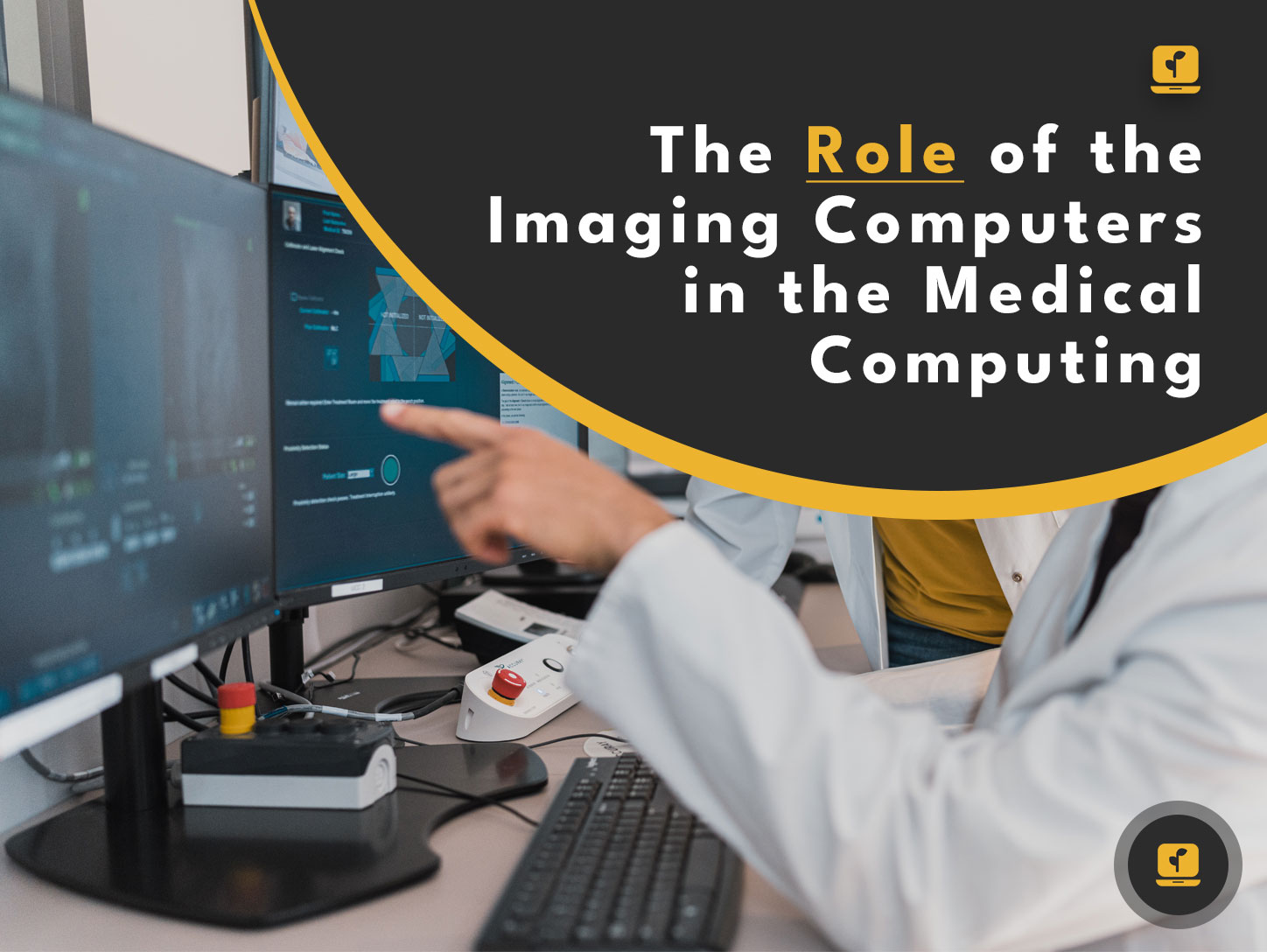As technology continues to advance, new and innovative ways of using it in the medical industry have emerged. One of the most promising technologies is computer vision. In this article, I will explore the basics of computer vision with deep learning, its evolution in the medical industry, and its role in medical computing.
Additionally, I will discuss the advantages and challenges of using computer vision in healthcare, and explore its future potential in the medical industry.
Table of Contents
Understanding the Basics of Computer Vision with Deep Learning
Computer vision is a field of study that focuses on allowing computers to interpret and analyze visual data from the world around them. This technology has become increasingly important in the medical industry, where it is used to analyze medical images and help doctors make more accurate diagnoses.
Deep learning is a subfield of machine learning that has played a critical role in the development of computer vision technology. Deep learning algorithms are designed to learn from large amounts of data, allowing them to recognize patterns and make predictions. This technology has been used to develop highly accurate image recognition algorithms, which can help doctors identify diseases and other medical conditions from medical images.
Medical Vision Technology and Its Evolution
Medical vision technology has evolved significantly in recent years, thanks in large part to advances in computer vision and deep learning. Today, medical professionals can use imaging computers to analyze medical images and identify potential health issues.
Imaging computers use advanced algorithms to analyze medical images, such as X-rays, CT scans, and MRI scans. These algorithms are designed to identify patterns and anomalies in the images, which can help doctors make more accurate diagnoses.
The Role of Imaging Computers in Medical Computing
Imaging computers are an essential part of medical computing, allowing doctors to analyze medical images quickly and accurately. These computers can help doctors identify potential health issues that may not be visible to the human eye, allowing them to make more informed decisions about a patient’s treatment.
One of the primary advantages of imaging computers is their ability to analyze medical images quickly and accurately. This technology can help doctors make more informed decisions about a patient’s treatment, potentially saving lives and improving patient outcomes.
Applications of Computer Vision in the Medical Industry
Computer vision has a wide range of applications in the medical industry, from diagnosing diseases to analyzing medical images. Some of the most promising applications include:
- Diagnosing diseases: Computer vision technology can help doctors diagnose diseases and other medical conditions from medical images. This technology can help doctors identify potential health issues that may not be visible to the human eye, allowing them to make more informed decisions about a patient’s treatment.
- Analyzing medical images: Imaging computers can analyze medical images quickly and accurately, allowing doctors to identify potential health issues and make more informed decisions about a patient’s treatment.
- Monitoring patients: Computer vision technology can be used to monitor patients and identify potential health issues before they become serious. This technology can help doctors intervene early, potentially saving lives and improving patient outcomes.
Machine Learning in Medical Imaging and Its Impact
Machine learning has played a critical role in the development of computer vision technology for medical imaging. Machine learning algorithms are designed to learn from large amounts of data, allowing them to recognize patterns and make predictions.
In medical imaging, machine learning algorithms can be used to analyze medical images and identify potential health issues. This technology has the potential to improve patient outcomes by allowing doctors to make more informed decisions about a patient’s treatment.
Computer Vision Algorithms Application in Healthcare
Computer vision algorithms have a wide range of applications in healthcare, from diagnosing diseases to analyzing medical images. Some of the most promising applications include:
- Identifying potential health issues: Computer vision algorithms can be used to identify potential health issues that may not be visible to the human eye. This technology can help doctors make more informed decisions about a patient’s treatment.
- Analyzing medical images: Imaging computers can analyze medical images quickly and accurately, allowing doctors to identify potential health issues and make more informed decisions about a patient’s treatment.
- Monitoring patients: Computer vision technology can be used to monitor patients and identify potential health issues before they become serious. This technology can help doctors intervene early, potentially saving lives and improving patient outcomes.
Medical Images that May Involve Contrast and How Computer Vision Helps in Their Analysis
Medical images that involve contrast can be challenging to analyze, but computer vision technology can help. Contrast agents are used in medical imaging to highlight specific areas of the body, making it easier for doctors to identify potential health issues.
Computer vision technology can analyze medical images that involve contrast, allowing doctors to identify potential health issues and make more informed decisions about a patient’s treatment. This technology can help doctors intervene early, potentially saving lives and improving patient outcomes.
The Future of Computer Vision in the Medical Industry
The future of computer vision in the medical industry is bright, with new technologies and applications emerging all the time. As computer vision technology continues to evolve, it has the potential to significantly improve patient outcomes by allowing doctors to make more informed decisions about a patient’s treatment.
The future of computer vision in the medical industry is bright, with new technologies and applications emerging all the time. As computer vision technology continues to evolve, it has the potential to significantly improve patient outcomes by allowing doctors to make more informed decisions about a patient’s treatment.
Some of the most promising areas for future development include:
- Improved image recognition algorithms: By developing more accurate image recognition algorithms, computer vision technology can help doctors identify potential health issues more quickly and accurately.
- Real-time monitoring: Computer vision technology can be used to monitor patients in real-time, allowing doctors to intervene early and potentially save lives.
- Personalized medicine: By using computer vision technology to analyze medical images and patient data, doctors can develop more personalized treatment plans that are tailored to the specific needs of each patient.
Advantages and Challenges of Using Computer Vision in Healthcare
There are several advantages and challenges associated with using computer vision in healthcare. Some of the advantages include:
- Improved accuracy: Computer vision technology can help doctors make more accurate diagnoses and identify potential health issues more quickly and accurately.
- Improved efficiency: Imaging computers can analyze medical images quickly and accurately, allowing doctors to make more informed decisions about a patient’s treatment.
- Early intervention: Computer vision technology can help doctors intervene early, potentially saving lives and improving patient outcomes.
Some of the challenges associated with using computer vision in healthcare include:
- Privacy concerns: As medical images are often sensitive and confidential, there are concerns about the privacy and security of patient data.
- Quality control: Ensuring the quality and accuracy of medical images is critical to the success of computer vision technology in healthcare.
- Cost: Implementing computer vision technology can be expensive, and there may be challenges associated with funding and reimbursement.
Conclusion
Computer vision technology has the potential to significantly improve patient outcomes by allowing doctors to make more informed decisions about a patient’s treatment. By analyzing medical images and identifying potential health issues, computer vision technology can help doctors intervene early, potentially saving lives and improving patient outcomes.
While there are challenges associated with using computer vision in healthcare, the potential benefits far outweigh the risks. As technology continues to evolve, computer vision will undoubtedly play an increasingly important role in the medical industry, revolutionizing the way doctors diagnose and treat diseases.










